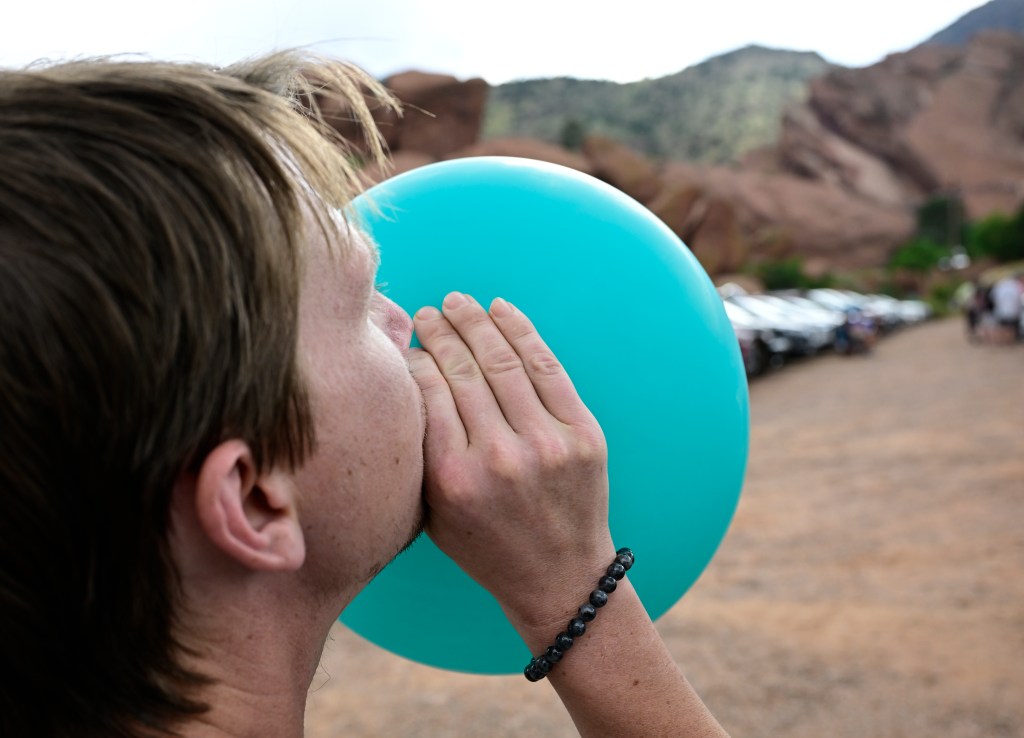The increasing use of nitrous oxide, commonly known as laughing gas, at concerts and social events is raising significant health concerns. Reports indicate that a growing number of concertgoers are inhaling nitrous from balloons, often purchased from vendors in parking lots, resulting in serious health risks.
At a recent concert by The String Cheese Incident at Red Rocks Amphitheatre in Colorado, attendees were seen inhaling nitrous oxide from balloons, despite its potential dangers. One concertgoer, who wished to remain anonymous, described the experience as “funny for about 30 seconds,” acknowledging the lack of thought given to the act. Vendors were seen selling balloons filled with nitrous, priced between $10 and $30, highlighting the widespread availability of the substance.
Nitrous oxide is typically used for medical purposes, such as in dental settings, and for culinary applications like whipping cream. However, recreational inhalation poses severe risks, including addiction, injury, and even death. Shireen Banerji, director of Rocky Mountain Poison & Drug Safety, warned that improper use can lead to asphyxiation, seizures, and other serious health issues.
Research has shown a concerning rise in nitrous oxide-related incidents. Between 2019 and 2023, the United States experienced a staggering 110% increase in deaths attributed to hypoxia, a condition caused by oxygen deprivation linked to nitrous oxide abuse. Emergency room visits related to nitrous usage also rose by 32% during the same period, according to data from the Drug Abuse Warning Network.
The National Survey on Drug Use and Health reported that 13 million people have experimented with nitrous oxide for recreational purposes, compared to 224.3 million individuals who have tried alcohol. Furthermore, approximately 2.9 million Americans aged 12 and older used inhalants in the past year, which include nitrous oxide and other substances like household solvents.
The trend is being fueled by social media, where posts glorifying nitrous usage have garnered millions of views. Companies selling nitrous products have adopted eye-catching branding, which has raised alarms among health professionals. The U.S. Food and Drug Administration recently issued renewed warnings about the risks of nitrous oxide abuse, particularly concerning vitamin B12 deficiency and neurological effects associated with heavy use.
Vendors selling nitrous oxide in concert parking lots have become a familiar sight, particularly in Colorado’s vibrant jam-band culture. This phenomenon has been dubbed “hippie crack,” reflecting its association with music scenes. While nitrous oxide is legal for certain uses, its purchase for recreational inhalation is prohibited, yet it remains easily accessible in various outlets.
Health experts express concern about the long-term effects of nitrous oxide use. Chronic inhalation can lead to severe health issues, including damage to the brain and nervous system. Banerji emphasized that the recreational use of nitrous should not be taken lightly. “There is no safe way to use it recreationally,” she cautioned.
Concert security measures vary, and while some venues have attempted to address the issue, enforcement remains inconsistent. For example, during a series of concerts at the University of Colorado, security officials confiscated 61 nitrous oxide tanks and issued one citation related to the substance, indicating the challenges in managing its usage.
The rising trend of nitrous oxide abuse is not only affecting individuals but also impacting the broader concert culture. Musicians and performers have noted that the presence of nitrous vendors can detract from their performances, as concertgoers spend more on balloons than on tips for live acts. Khalil Simon, a musician from the group Brothers of Brass, shared his frustration, stating that nitrous vendors have overshadowed other facets of the concert scene.
As concert culture evolves, so does the need for public awareness about the risks associated with nitrous oxide use. Health officials are advocating for increased education and outreach efforts to combat the rising trend and ensure that concertgoers are informed about the potential dangers. Those interested in learning more about the risks of nitrous oxide are encouraged to reach out to resources like Rocky Mountain Poison & Drug Safety for guidance.
In conclusion, the surge in nitrous oxide abuse at social events, particularly concerts, poses a significant public health challenge. As the popularity of this substance grows, so too does the imperative to address its use and educate individuals about the associated risks.
